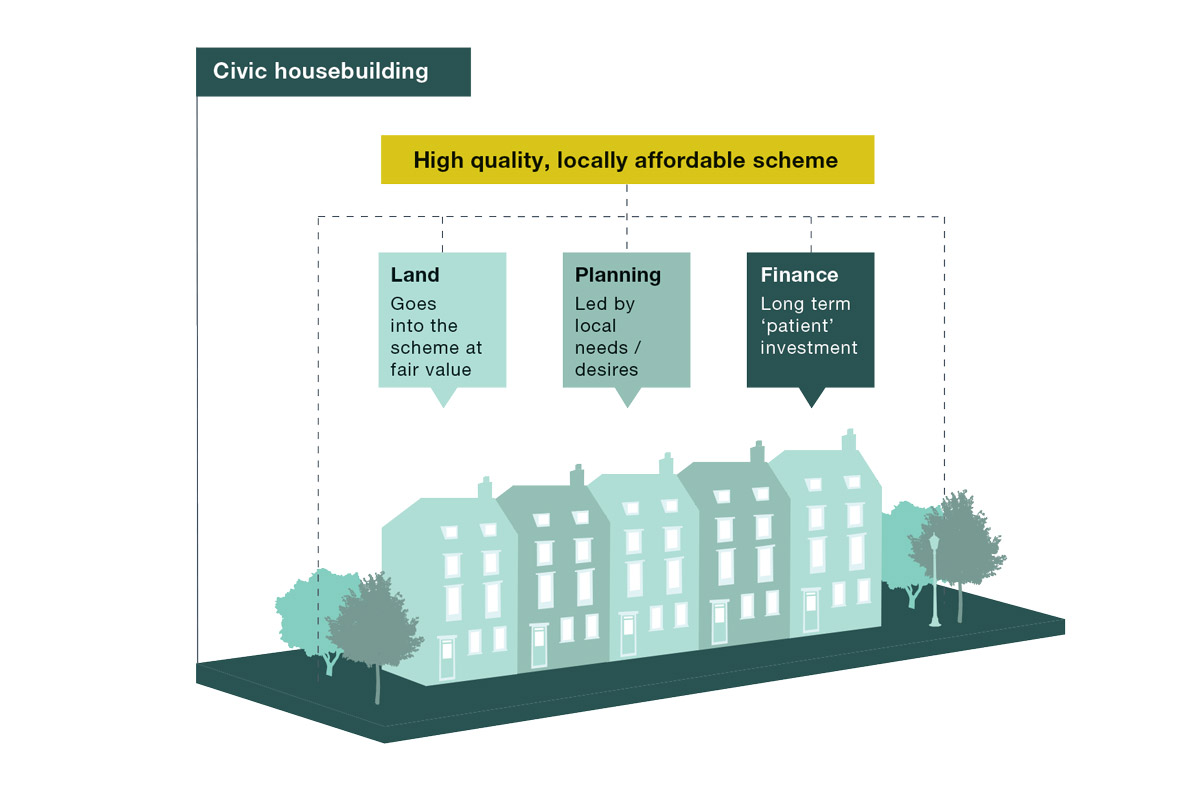New research released today by Shelter shows that across England, eight out of ten working, private renting families cannot afford a newly-built home in their area – even if they have been able to save up a large enough deposit.
But how can this be? We know we have a shortage of homes of all kinds, right across the country. At Shelter, we see the ramifications of this shortage every day: people coming to us for help, facing homelessness and spiralling housing costs. In recent years, we have worked hard to understand exactly why it is that we aren’t building the homes we need – because we know that ultimately, the only way to tackle the shortage is to build more homes. And the short answer is that the existing system of speculative housebuilding simply can’t.
Today, Shelter has set out our vision for building new homes, explaining the fundamental underlying problem within the speculative housebuilding system: the competitive way in which housebuilders acquire the land to build on in the first place. Developers compete against one another to offer the highest upfront sum to the landowner, based on assumptions of how many homes they can build, how much they can sell them for, and how much they’ll be expected to contribute to the community in the form of affordable housing and infrastructure. The developer who can offer the highest sum, wins. Competitive pressure therefore works against the public interest.
 This is the system we have been relying on to build homes for over a generation. Successive governments have tinkered around the edges of housebuilding, introducing reforms designed both to improve the planning system and incentivise developers to build, and on the other side to help people into homeownership. But these have not been successful, and ultimately, no matter what Government does – this system cannot and will not build the homes we need.
This is the system we have been relying on to build homes for over a generation. Successive governments have tinkered around the edges of housebuilding, introducing reforms designed both to improve the planning system and incentivise developers to build, and on the other side to help people into homeownership. But these have not been successful, and ultimately, no matter what Government does – this system cannot and will not build the homes we need.
We believe there is an answer – and it’s simple. It’s the method which built some of Britain’s most successful places, from Edinburgh’s New Town to the Peabody Estates; from Letchworth Garden City to Milton Keynes. And it can be found on a smaller scale today: in places such as Nansledan, Cornwall, and Derwenthorpe in North Yorkshire. We’re calling this approach New Civic Housebuilding, and the report we’re releasing today sets out how this model can be harnessed by Government in order to build the homes we need.
At its heart, New Civic Housebuilding is based on the principle that the goal of building homes is to benefit the people who will live in them, and the communities they will be part of. Under the speculative model, the public benefit from housebuilding is generated by whatever value is left in a scheme once profits have been extracted. The New Civic Housebuilding model means the opposite: the level of profit in a scheme will be determined by how much value is left once the public interest has been served.

For too long, too much of the value generated from building new homes has flowed straight into the pockets of landowners and developers. They have done very well out of this broken system, at the price of a generation of people stuck in expensive, poor quality homes. We’re not saying housebuilders and landowners should get nothing out of building homes. But more of the value generated by land, and by new housing, needs to go to the local community. That means the affordable homes for local people to live in, and the services and infrastructure needed to help those communities thrive. It’s critical that ordinary families across the country genuinely feel the benefit of new homes in their area.
The launch of this report is a culmination of many months of work, and of years fighting for more affordable homes. New Civic Housebuilding is a vision for a new model of housebuilding, providing a better alternative to the current speculative model which struggles to meet demand. There will be many vested interests who argue against this analysis and against the policies recommended. But as a country we have listened to these arguments for a long time, while watching homes become less and less affordable. It’s high time we remember how we built the beautiful and affordable homes of the past which people are so proud of today. It’s time to revive Civic Housebuilding.
